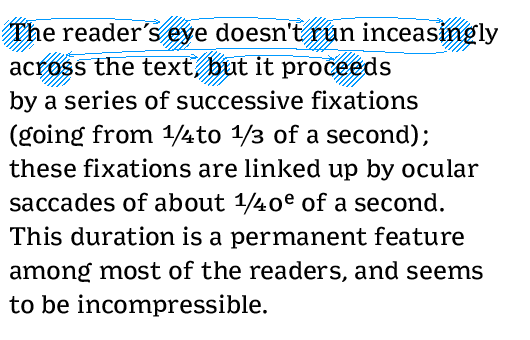
Before designing Minuscule, I needed to understand the reading process, a quite complex and nebulous thing.
The first researcher to have laid the foundations of a scientific theory of reading (as «the visual perception of a text») was precisely Émile Javal ; despite the limited means available a century ago, he put forward observations that still remain unquestioned.
Fovea. The retina can be demarcated into the fovea, a central small region of high acuity, and the parafovea, where acuity drops off steeply. Only the fovea is precise enough to perceive the text precisely. At the distance which is necessary for reading (between 30 and 40 centimetres), its visual angle is so reduced (from 3 to 6°) that it can only «embrace» about ten letters at once (in body text) Blurry side. The relevance of the blurry parafovea to the act of reading is fundamental: single letters become undecipherable, so we generally rely on whole words instead. Saccades. Consequently, and contrary to the theory according to which the eye runs unceasingly across the text, Javal demonstrated that the eye actually makes a series of short pauses, or «saccades».
He observed also that the number of saccades made by the eye during the reading process does not depend on the number of characters to be picked up.